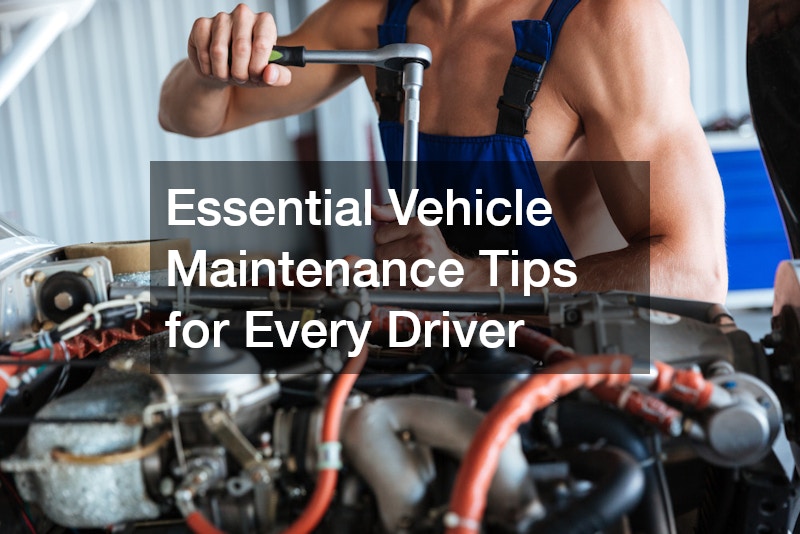Essential Vehicle Maintenance Tips for Every Driver


In this article, we explore vital vehicle maintenance tips to ensure your car remains in top condition. Regular upkeep is crucial for safety, performance, and extending the lifespan of your vehicle. Read on to discover answers to some of the most common questions about vehicle maintenance. Whether you’re a seasoned driver or new to car ownership, these insights can help you stay ahead of potential issues and avoid costly repairs.
How Often Should Oil Be Changed?
Regular oil changes are essential as they keep your engine running smoothly and efficiently. The frequency of oil changes can vary greatly depending on factors like the age of the vehicle, the type of oil used, and driving conditions. Most experts recommend changing your oil every 3,000 to 5,000 miles, but modern engines and synthetic oils often allow for longer intervals. Staying consistent with oil changes also helps maintain fuel efficiency and engine performance over time.
For instance, you might extend oil change intervals if you mostly drive on highways rather than in stop-and-go traffic. Ignoring timely oil changes can lead to engine sludge, increased wear, and potential engine failure. Additionally, consulting your vehicle’s manual provides specific guidance tailored to your car’s needs. Manufacturers often include maintenance schedules that factor in different driving environments to help you determine the ideal service timeline.
Tracking your driving habits is essential, as frequent short trips can require more frequent oil changes. Similarly, harsh weather conditions and heavy towing can also demand more frequent maintenance. A well-lubricated engine is healthy; hence, maintaining clean oil is vital to avoid costly repairs down the road. Monitoring your oil levels and quality between changes can also help detect problems early and ensure continued engine protection.
What Are the Signs of Brake Wear?
Brakes are one of the most critical components for driver safety, and early wear detection can prevent severe accidents. Common signs of brake wear include squealing noises, which indicate that the brake pads may be worn down. Vibration or pulling to one side when braking can suggest a need for alignment or brake adjustment. These symptoms should never be ignored, as they can quickly escalate into more serious and costly issues.
Another key indicator of brake wear is a longer stopping distance. If your vehicle takes longer to stop than it used to, it’s crucial to have your brakes inspected. Low or spongy brake pedals can also signify air in the brake lines or low brake fluid, both of which require immediate attention. Neglecting these signs compromises safety and can lead to extensive damage to the braking system.
Regular brake inspections can help identify these issues early on, reducing the potential for brake failure when you need it most. If your brake light is on, it’s a clear signal that you should have your system checked by a professional. Ultimately, maintaining your brakes ensures a safe driving experience and peace of mind. Incorporating brake checks into your routine vehicle maintenance can extend the life of your braking system and improve overall vehicle performance.
How Do I Maintain Tire Health?
Tire maintenance is crucial for safe driving and optimal vehicle performance. Regularly checking tire pressure keeps your tires properly inflated, improving fuel efficiency and preventing undue wear. Rotating your tires every 5,000 to 7,500 miles ensures even wear and extends tire life.
Proper tire alignment prevents uneven wear patterns and enhances overall handling. Misalignment can occur from driving over potholes or curb impacts, affecting vehicle stability. Monitoring tread wear is also essential, as worn-out tread can reduce traction, especially in wet conditions.
Using the penny test is easy to check tire tread depth; if Lincoln’s head is visible, it’s time for new tires. Building a routine of visual and manual checks helps you maintain tire health effectively. Healthy tires contribute to a smoother, safer drive and can also improve your vehicle’s fuel efficiency.
When Should I Replace Vehicle Fluids?

Vehicle fluids are integral to your car’s functionality, and each has its own replacement schedule. Engine coolant prevents overheating and should be flushed and replaced according to your vehicle’s guidelines. Transmission fluid ensures smooth gear transitions and should be changed roughly every 30,000 to 60,000 miles, depending on vehicle usage and type.
Brake fluid is another critical fluid; it can become less effective as it attracts moisture over time. Manufacturers often recommend replacing it every 20,000 to 45,000 miles or every three years. Power steering fluid might also need replacing, particularly if steering becomes more laborious or you notice fluid leaks.
Regular fluid checks are vital to vehicle longevity and performance, much like lubricating the engine. Watching for any visible leaks, strange odors, or unusual noises can also give early indications of fluid-related issues. Staying proactive about fluid maintenance ensures your vehicle runs smoothly and efficiently.
Regular vehicle maintenance enhances safety and performance and prevents costly repairs in the future. By adhering to these tips and addressing common maintenance questions, you can ensure your vehicle remains reliable and efficient throughout its lifespan.


